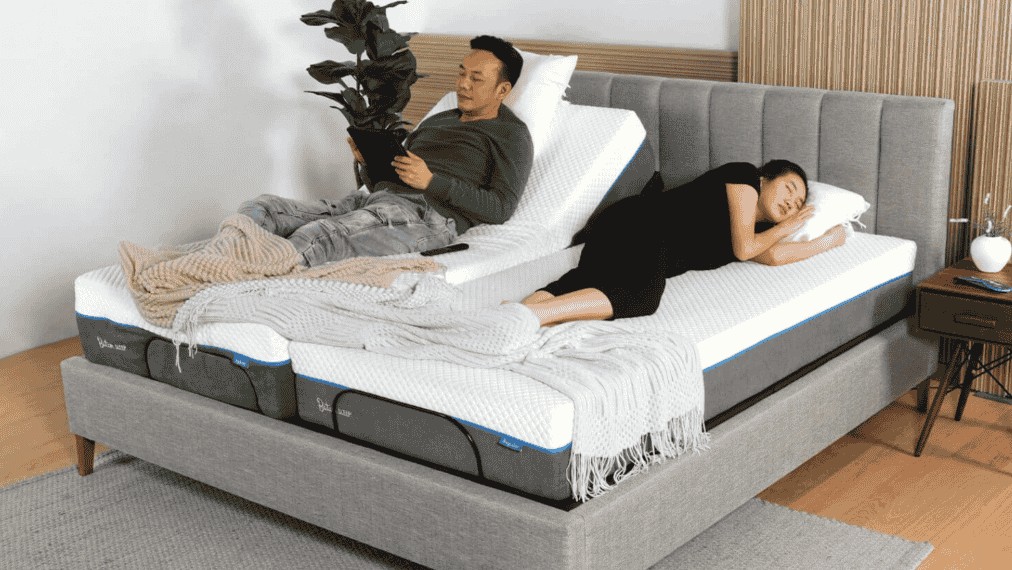In recent years, smart home technology has revolutionized the way we live, work, and relax — and nowhere is this transformation more impactful than in how we sleep. From connected lighting systems to advanced climate control and personalized sleep trackers, smart homes are creating a new sleep environment tailored to individual needs. Even elements like choosing the right mattress for an adjustable bed can now be integrated into a smarter, more comfortable sleep setup. In this article, we’ll explore how smart homes are reshaping sleep routines, improving rest quality, and helping us wake up refreshed and energized.
The Rise of Smart Sleep Technology
Sleep has always been fundamental to health and well-being, but until recently, optimizing it was largely trial and error. Today, smart home innovations are providing data-driven insights and automated comfort adjustments that transform bedrooms into personalized sleep sanctuaries.
Smart sleep devices fall into several key categories:
- Sleep Trackers: Wearables and bedside monitors track movement, heart rate, breathing, and sleep cycles.
- Smart Lighting: Automated lights mimic natural circadian rhythms to improve sleep onset and quality.
- Climate Control: Smart thermostats adjust room temperature to optimal sleep conditions.
- Sound Systems: White noise machines and personalized soundscapes promote relaxation and reduce disturbances.
- Smart Beds and Mattresses: Including adjustable beds that pair with apps to find the ideal position and firmness.
Let’s break down how these innovations are changing sleep.
Personalized Sleep Tracking for Better Insights
The foundation of smart sleep technology lies in monitoring. Devices such as Fitbit, Oura Ring, and smart mattress sensors provide detailed data on sleep duration, stages (light, deep, REM), and disturbances. Unlike manual sleep diaries, these devices offer objective, minute-by-minute tracking.
This data enables users to identify patterns and potential sleep disruptors, such as restless movements or irregular heart rate spikes. When integrated into a smart home ecosystem, this information can trigger automated responses — for example, dimming the lights or adjusting the thermostat when your body shows signs of entering deep sleep.
The result? More precise control over your environment based on how your body actually behaves throughout the night.
Smart Lighting: Syncing with Your Body’s Clock
Light profoundly influences our circadian rhythms — the internal biological clock that regulates sleep-wake cycles. Traditional artificial lighting can disrupt this rhythm, making it harder to fall asleep or wake refreshed.
Smart lighting systems like Philips Hue or LIFX use programmable bulbs that gradually dim and change color temperature, mimicking natural sunset and sunrise. These changes cue the body to produce melatonin in the evening and cortisol in the morning, hormones essential to sleep and wakefulness.
For example, your smart home can be programmed to reduce blue light exposure an hour before bedtime, creating a relaxing environment. In the morning, soft, bright light can simulate sunrise, helping you wake up gently and naturally.
Climate Control: Finding the Perfect Sleep Temperature
Temperature plays a critical role in sleep quality. Research shows that a cooler room—generally between 60 to 67 degrees Fahrenheit (15.5 to 19.5 degrees Celsius)—helps the body prepare for and maintain deep sleep.
Smart thermostats like Nest or Ecobee allow you to program temperature schedules that align with your sleep phases. Some systems even integrate with sleep trackers to fine-tune the climate based on when you enter REM or deep sleep.
By maintaining an optimal temperature, smart homes reduce night-time awakenings caused by discomfort, leading to longer and more restorative sleep.
Soundscapes for Sound Sleep
Noise disturbances are a major cause of fragmented sleep. Smart homes address this with adaptive sound machines that produce white noise, nature sounds, or soothing melodies.
More advanced systems analyze ambient noise in real time and adjust volume or change sound profiles to mask sudden disturbances, such as traffic or a barking dog. Integrating these soundscapes with other smart devices means that your environment remains calm and consistent, even if the external world is noisy.
The Role of Smart Beds and Mattresses
One of the most exciting advances in smart sleep technology is the evolution of smart beds and mattresses, especially those designed for adjustable beds.
A mattress for an adjustable bed offers not only customizable comfort in terms of firmness and support but also often comes embedded with sensors that monitor your sleep posture and movement. When paired with smart home apps, these beds can automatically adjust incline and firmness based on your sleep cycle or health metrics, such as snoring or restlessness.
Imagine waking up in the perfect position every morning because your bed has subtly adjusted itself throughout the night to reduce pressure points and promote optimal spinal alignment. These beds can also integrate with other smart devices — for instance, gently raising the head to improve breathing if snoring is detected.
Integrating Smart Home Devices for a Seamless Sleep Experience
What truly sets smart homes apart is the ability to create a holistic sleep environment where multiple devices work together seamlessly.
For example, a typical smart sleep routine might include:
- Your sleep tracker signals bedtime, prompting the smart lights to dim.
- The thermostat lowers the room temperature to the ideal setting.
- A white noise machine activates to mask background sounds.
- Your adjustable bed gently shifts to your preferred sleep position.
All these elements communicate through smart hubs like Amazon Alexa, Google Home, or Apple HomeKit, controlled by voice commands or pre-set schedules.
Benefits Beyond Better Sleep
Improved sleep quality leads to numerous benefits: enhanced mood, better cognitive function, reduced stress, and improved physical health. Smart homes take the guesswork out of creating the ideal sleep environment, making these benefits accessible to everyone.
Additionally, many smart sleep products now include health monitoring features that can alert you to potential issues like sleep apnea or irregular heart rhythms, providing early warnings and encouraging healthier habits.
Challenges and Considerations
Despite the advantages, integrating smart sleep technology comes with some challenges:
- Privacy: Sleep data is sensitive and must be protected from unauthorized access.
- Cost: High-quality smart beds and systems can be expensive.
- Complexity: Setting up and managing multiple devices can be overwhelming for some users.
However, as technology advances and prices become more accessible, these hurdles are steadily decreasing.
The Future of Sleep in Smart Homes
Looking ahead, smart homes will become even more intuitive, using artificial intelligence to predict and respond to our needs in real time. Imagine a bedroom that not only adjusts temperature and lighting but also suggests personalized bedtime routines based on your stress levels or daily activity.
Integration with health apps, nutrition trackers, and mental wellness platforms will create a comprehensive system that nurtures not just sleep, but overall well-being.
Conclusion
Smart homes are transforming sleep from a passive activity into an active, data-driven experience tailored to individual needs. By leveraging sleep trackers, smart lighting, climate control, soundscapes, and innovative smart beds — including specialized mattresses for adjustable beds — these technologies help us fall asleep faster, stay asleep longer, and wake feeling truly rested.
As these systems become more affordable and user-friendly, the future of sleep looks smarter, healthier, and more comfortable than ever before.




Be First to Comment